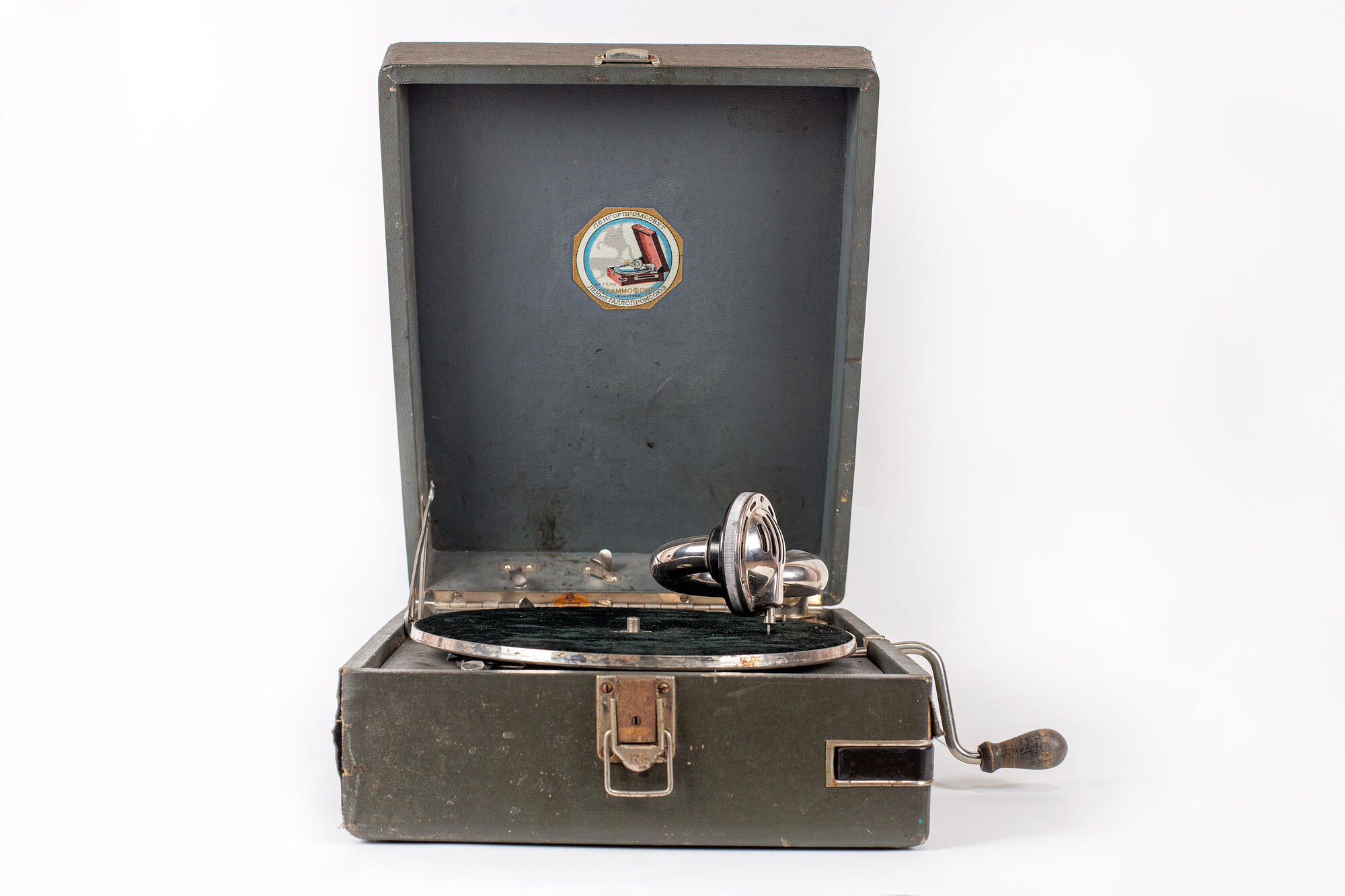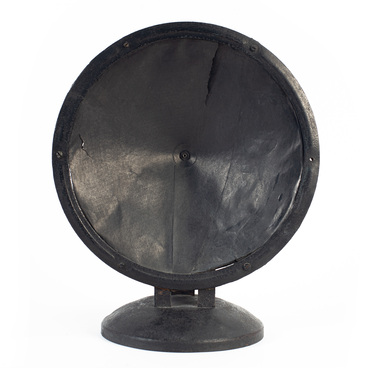The pathephone was a popular record player in the first half of the 20th century. It differed from the gramophone since it was smaller, portable, and had a built-in horn. A pathephone looked like a wooden suitcase with a lid that could be closed and carried along.
The history of the phonograph began with the invention of Thomas Edison. In 1877, he designed a device for mechanical recording and reproduction of sound — the phonograph. Ten years later, the German engineer Emil Berliner invented the gramophone, which began the era of popular culture. The pathephone became a more advanced version of the gramophone during the experiments of Guillon Kemmler, an employee of the French film studio Pathé, in 1901.
Kemmler reduced the outer bell of the gramophone and built it inside the case. He optimized the apparatus and made it lighter and more portable. The word “pathephone” combined the name of the company, “Pathé”, and “phone”, which means “sound”. This term was used only in Russia and the USSR and became part of the Soviet culture of the 20th century. In most languages of the world, there is no word for “pathephone”, and the device is called a gramophone or some other local term.
Pathephones were mechanical devices, that is, they worked without electricity. They were wound up with a spring, which was enough to listen to one side of the record — it lasted about five minutes. The spring was started with a special handle, it was necessary to tighten it to the end, but not too tight so that the spring would not break. The sound volume was not regulated and was quite loud: people danced to the music on squares in parks.
The first records were called “recordy”, from the English word “record”. They were thick, with a rough edge, and weighed nearly half a kilo. There were two holes in the center of the record. The record occupied only one side, on the other side the name of the plate was printed along with the libretto or musical score. Double-sided records appeared only in 1903. Pathephones went out of use after the 1950s, when electro-acoustic electrophones appeared that did not require a spring winding and worked at different volumes.
The history of the phonograph began with the invention of Thomas Edison. In 1877, he designed a device for mechanical recording and reproduction of sound — the phonograph. Ten years later, the German engineer Emil Berliner invented the gramophone, which began the era of popular culture. The pathephone became a more advanced version of the gramophone during the experiments of Guillon Kemmler, an employee of the French film studio Pathé, in 1901.
Kemmler reduced the outer bell of the gramophone and built it inside the case. He optimized the apparatus and made it lighter and more portable. The word “pathephone” combined the name of the company, “Pathé”, and “phone”, which means “sound”. This term was used only in Russia and the USSR and became part of the Soviet culture of the 20th century. In most languages of the world, there is no word for “pathephone”, and the device is called a gramophone or some other local term.
Pathephones were mechanical devices, that is, they worked without electricity. They were wound up with a spring, which was enough to listen to one side of the record — it lasted about five minutes. The spring was started with a special handle, it was necessary to tighten it to the end, but not too tight so that the spring would not break. The sound volume was not regulated and was quite loud: people danced to the music on squares in parks.
The first records were called “recordy”, from the English word “record”. They were thick, with a rough edge, and weighed nearly half a kilo. There were two holes in the center of the record. The record occupied only one side, on the other side the name of the plate was printed along with the libretto or musical score. Double-sided records appeared only in 1903. Pathephones went out of use after the 1950s, when electro-acoustic electrophones appeared that did not require a spring winding and worked at different volumes.






